NCERT Textbook Solutions for Class 10 Science Updated for Session 2025-26 with MCQ Online Test of all chapters in both Hindi and English Medium. Class 10 NCERT Science Solutions are based on the revised syllabus and new NCERT textbooks for the 2025-26 academic year. It has now only 13 chapters. Preparing for Class 10 CBSE Science exams becomes much easier with NCERT Textbook Solutions for Class 10 Science Chapter-wise PDFs.
Get here complete solutions for Class 10 Science with MCQ Online Test. Each chapter, from NCERT Chemistry Chapter Chemical Reactions and Equations to CBSE Chapter Our Environment, is meticulously explained in these solutions, making complex topics simpler. Students search for resources like Class 10 Science Textbook NCERT Topic-wise Solutions PDF, which offers easy accessibility to the detailed answers.
NCERT Solutions Class 10 Science for Session 2025-26 Exams
Class 10 Science | Chemistry
Chapter 1: Chemical Reactions and Equations
Chapter 2: Acids, Bases and Salts
Chapter 3: Metals and Non-Metals
Chapter 4: Carbon and its Compounds
Class 10 Science | Biology
Chapter 5: Life Processes
Chapter 6: Control and Coordination
Chapter 7: How do Organisms Reproduce?
Chapter 8: Heredity
Class 10 Science | Physics
Chapter 9: Light – Reflection and Refraction
Chapter 10: Human Eye and Colourful World
Chapter 11: Electricity
Chapter 12: Magnetic Effects of Electric Current
Class 10 Science | Environmental Studies
Chapter 13: Our Environment
Class 10 Science MCQ Online Test Solutions
Class 10 Science solutions also provide MCQ Online Test with answers and explanation. It gives clarity on important topics covered in Class 10 Science Biology Chapter How Do Organisms Reproduce or Class 10 Science Book Physics and Bio Chapter 8 Heredity, ensuring thorough preparation. The availability of 10th Science previous year papers and sample papers supplements these solutions, helping students practice questions that follow CBSE guidelines. With Class 10 Science MCQ and notes PDF and important questions, learners can focus on essential concepts, bridging the gap between understanding and application for better exam performance.
Chapter 1 Chemical Reactions and Equations MCQ
Chapter 2 Acids, Bases and Salts MCQ
Chapter 3 Metals and Non-Metals MCQ
Chapter 4 Carbon and its Compounds MCQ
Chapter 5 Life Processes MCQ
Chapter 6 Control and Coordination MCQ
Chapter 7 How do Organisms Reproduce? MCQ
Chapter 8 Heredity MCQ
Chapter 9 Light – Reflection and Refraction MCQ
Chapter 10 Human Eye and Colourful World MCQ
Chapter 11 Electricity MCQ
Chapter 12 Magnetic Effects of Electric Current MCQ
Chapter 13 Our Environment MCQ
Students turn to NCERT Exercise Solutions for Class 10 Science to build a strong conceptual foundation for CBSE board exams. Resources like the Class 10 Science NCERT Biology book PDF provide the exact syllabus prescribed by CBSE, while the chapter-wise solutions break down every topic, such as Chemistry Chapter 4 Carbon and Its Compounds or Physics Chapter Human Eye and the Colorful World, into manageable portions. These solutions are an indispensable tool for mastering topics in Class 10 Science Chemistry Chapter 2 Acids, Bases and Salts or understanding diagrams in Class 10 Biology Science Chapter 5 Life Processes. They help students solve real exam-level problems efficiently. Coupled with Class 10 Science Environmental Science important questions and Class 10 Science sample papers, these materials not only boost confidence but also enhance time management skills during exams. With such a structured approach, students can tackle challenging questions and score high marks effortlessly.
How to Prepare for Class 10 Science
If you are planning to Score 100% in Class 10 Science based NCERT solutions, follow the two months preparation for 10th science. Class 10th Science solutions are solve problems related to the science curriculum provided by the National Council of Educational Research and Training (NCERT) in India.
Study Plan for Class 10 Board Exam
Master Your Goals in 10th Science with a Well-Structured Study Plan
A proper study plan for Class 10 Science ensures organized learning, covering all chapters systematically while balancing time for revision and practice. It helps in identifying weak areas, mastering key concepts and improving time management. With consistent effort, students enhance confidence and performance, achieving better results in board exams.
“Science is not only a disciple of reason but also one of romance and passion.” – Stephen Hawking
| Day | Topic/Chapter | Study Time | Activity |
|---|---|---|---|
| Monday | Chemical Reactions and Equations (Chapter 1) | 4:00 PM – 5:30 PM | Read NCERT and practice equations |
| Tuesday | Acids, Bases and Salts (Chapter 2) | 4:00 PM – 5:30 PM | Watch videos and solve exercises |
| Wednesday | Life Processes (Chapter 6) | 4:00 PM – 5:30 PM | Diagram practice and NCERT questions |
| Thursday | Electricity (Chapter 12) | 4:00 PM – 5:30 PM | Practice numerical |
| Friday | Heredity, Control and Coordination | 4:00 PM – 5:30 PM | Memorize organs and functions |
| Saturday | Revision and Tests | 4:00 PM – 6:00 PM | Mock tests and doubt clearing |
| Sunday | Practical Experiments | 4:00 PM – 5:00 PM | Experiment review and notes |
Preparing for the CBSE Class 10 Science board exams is easier with comprehensive resources like the Class 10 Science Biology Textbook Solutions Guide. From Class 10 Science Physics NCERT Assignment Solutions to Class 10 Science Chemistry worksheet solutions, students can access chapter-specific explanations to enhance their understanding. Popular among learners are the Class 10 CBSE Environmental Science chapter-wise solutions, which provide step-by-step answers to textbook questions for each topic, including those found in Class 10 Science solved papers.
With the availability of Class 10 Science solutions free download, students can quickly access these materials offline, while Class 10 Science online solutions cater to learners preferring digital formats. Resources such as the Class 10 Science important questions, Class 10 Science study material and Class 10 Science notes PDF further simplify the revision process, allowing students to focus on high-weightage topics and ensure better retention for exam success.
The 10th Science NCERT textbook solutions cover various scientific concepts and topics that students study in their 10th-grade science textbook. Class 10 Science NCERT Chapter-wise solutions serve as valuable tools for both students and educators. They provide structured guidance for learning scientific concepts, practicing problem-solving and preparing for exams. These solutions can be found in the official NCERT textbooks, educational websites and online platforms.
| Class 10 All Subjects iOS App for iPad & iPhone |
Science is closely linked to subjects like mathematics, technology and engineering. Learning science encourages students to think across different fields, showing how ideas from various subjects can work together to solve challenging problems. Tiwari Academy provides complete solutions for the Class 10 Science NCERT textbook, with clear explanations and step-by-step guidance to help students understand and solve problems easily.
| Class: 10 | Science |
| Number of Chapters: | 13 (Thirteen) |
| Content: | Intext and Exercise Solutions |
| Syllabus based Important Terms: | Important Topics in each chapter |
| Content Type: | Text, PDF, Images and Videos |
| Academic Session: | Year 2025-26 CBSE Exams |
| Medium: | English and Hindi Medium |
| Quick Preparation: | Preparation 10th science in 60 days |
Students aiming for top scores in Class 10 Science Chemistry rely on structured materials like the Class 10 Environmental Science solutions in Hindi Medium and CBSE Class 10 Science detailed solutions in English, catering to diverse linguistic needs. The Class 10 Science revision guide provides a concise yet thorough review of all key concepts, while resources like Class 10 Science Physics sample papers and Class X Science previous year papers offer ample practice for exam readiness. Tools like the 10th Science question bank and Class 10 Science practice questions sharpen problem-solving skills, ensuring confidence in tackling any question.
The Class 10th Science Biology solutions by chapter allow targeted study, while Class 10 PDF Science solutions for CBSE and Class 10 Science solutions for all boards are tailored for respective curriculum. By leveraging these materials, students not only enhance their conceptual clarity but also improve their exam strategy for outstanding results.
Here are some tips on how to score well using Tiwari Academy’s Class 10 Science NCERT Solutions. This will help you to understand the concepts and to identify the areas where you need help. The solutions should not be used as a substitute for studying the textbook. Revise the solutions regularly. This will help you to retain the information and to prepare for your exams.
Class 10 Science NCERT solutions align with the CBSE board exam pattern and help students prepare effectively for their science exams. Some solutions may include interactive elements like activities and experiments that engage students in hands-on learning. These are aligned with the Class 10 Science syllabus, ensures students learn all the necessary topics and concepts. Teachers and parents may receive extra notes or explanations to help students understand the material better. Tiwari Academy often offers free educational resources, making it a budget-friendly alternative to traditional textbooks or coaching classes, benefiting both students and parents.
Students need to communicate their findings and ideas clearly in science, whether through writing reports, giving presentations, or participating in discussions. Developing strong communication skills not only helps in science but also enhances learning in all subjects.
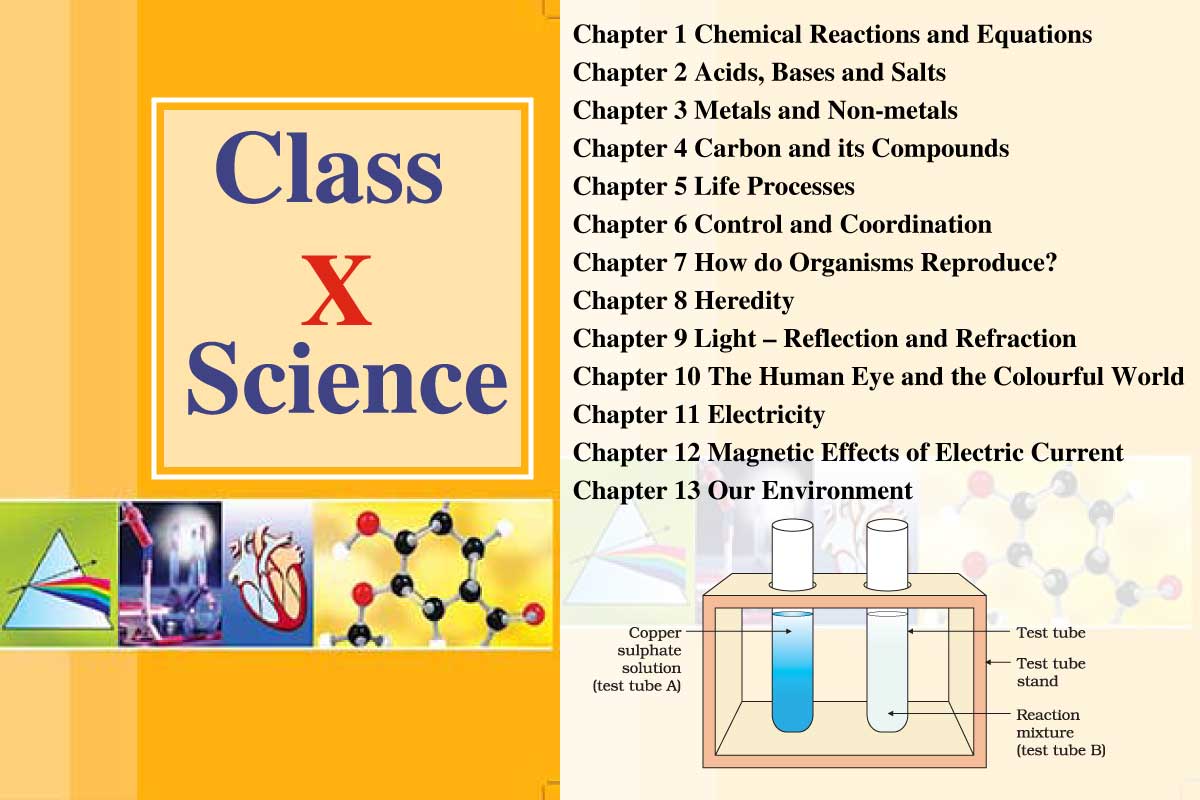
Practice solving problems from both the textbook and Tiwari Academy NCERT Textbook Solutions to improve your problem-solving skills and identify areas for improvement. Combine Tiwari Academy’s NCERT Chapter-wise Solutions with other resources like previous year exam papers and sample papers to better understand the types of questions that may appear in your exams.
The students of UP Board also get the UP Board Solutions for Class 10 Science in Hindi Medium or English Medium. All the NCERT Solutions Offline Apps are fully updated for the current academic session. Apart from CBSE and UP Board Students, NCERT Solution is free for Bihar board, Gujrat Board, Uttarakhand Board, MP Board (Madhya Pradesh Board, Jammu and Kashmir Board of School Education (jkbose), whosoever are following NCERT Textbooks.
Scientific research often involves setbacks and failures. Learning to cope with failures and continue working toward a solution cultivates perseverance and resilience. For UP board (High School) students, Class X solutions are prepared in Hindi Medium. If the Student of any board whether CBSE or UP Board or any other board, facing any problem to get 10th Science Solutions in Hindi or English Medium, please contact us for help without any charge.
CBSE NCERT Solutions for Class 10 Science
Key features of Class 10 Science NCERT Topic-wise solutions cover a variety of topics, including physics, chemistry, biology, and environmental science. These include concepts like force, energy, chemical reactions, reproduction, genetics and more. The solutions offer simple and clear explanations, making complex scientific ideas easy for 10th-grade students to grasp. Tiwari Academy provides these resources for free, without requiring any login, password or promotional calls—just a peaceful study experience for Class 10 Science.
All the solutions are updated for new academic session. Students of UP Board, MP Board, Gujrat Board and all other boards can use these solutions because they are following latest NCERT Textbooks for X. Create a study schedule and follow it consistently to stay on track and ensure you cover all important topics. Consider finding a study partner or joining a group for support. Remember to take breaks when needed to avoid feeling overwhelmed. Make sure to get enough sleep, as it’s essential for effective learning. I hope these tips help you perform well in your Class 10 Science exams.
Class 10 Science Chaptertwise Important Questions for Exams Practice
- Class 10 Science Chapter 1 Important Questions
- Class 10 Science Chapter 2 Important Questions
- Class 10 Science Chapter 3 Important Questions
- Class 10 Science Chapter 4 Important Questions
- Class 10 Science Chapter 5 Important Questions
- Class 10 Science Chapter 6 Important Questions
- Class 10 Science Chapter 7 Important Questions
- Class 10 Science Chapter 8 Important Questions
- Class 10 Science Chapter 9 Important Questions
- Class 10 Science Chapter 10 Important Questions
- Class 10 Science Chapter 11 Important Questions
- Class 10 Science Chapter 12 Important Questions
- Class 10 Science Chapter 13 Important Questions
Consistency, a thorough understanding, and regular practice are essential for excelling in Class 10 Science. Science sparks curiosity, encouraging students to ask questions and seek answers. This inquisitive mindset can inspire learning across all subjects. While Tiwari Academy’s resources are helpful, your dedication and effort are key to achieving good marks. There are a number of reasons why Tiwari Academy is considered to be one of the best platforms for Class 10 Science solutions.
- Tiwari Academy’s NCERT Chapter-wise solutions are written by experienced subject matter experts and cover all of the important topics in the textbook. The solutions are accurate and easy to understand.
- Tiwari Academy’s NCERT Textbook solutions provide step-by-step solutions to all of the problems in the textbook. This helps students to understand how to solve problems and to develop their problem-solving skills.
- Tiwari Academy’s NCERT Topic-wise solutions are aligned with the CBSE syllabus. This means that by studying the Tiwari Academy NCERT solutions, students can be sure that they are covering all of the important topics that will be on their exams.
- Tiwari Academy’s NCERT Detailed solutions are available in both English and Hindi. Tiwari Academy’s NCERT solutions are available for free online. This makes them accessible to all students, regardless of their financial background.
Science education includes important discussions on ethical and moral considerations, such as the responsible conduct of research and the societal impact of scientific advancements. These discussions encourage students to think critically about the consequences of scientific discoveries and to consider the ethical dilemmas that may arise.
By promoting ethical reasoning, science education helps students make thoughtful, informed decisions in their future careers and personal lives. Understanding these issues not only shapes responsible scientists but also responsible global citizens who are aware of the moral implications of their actions in the rapidly advancing world of science and technology.
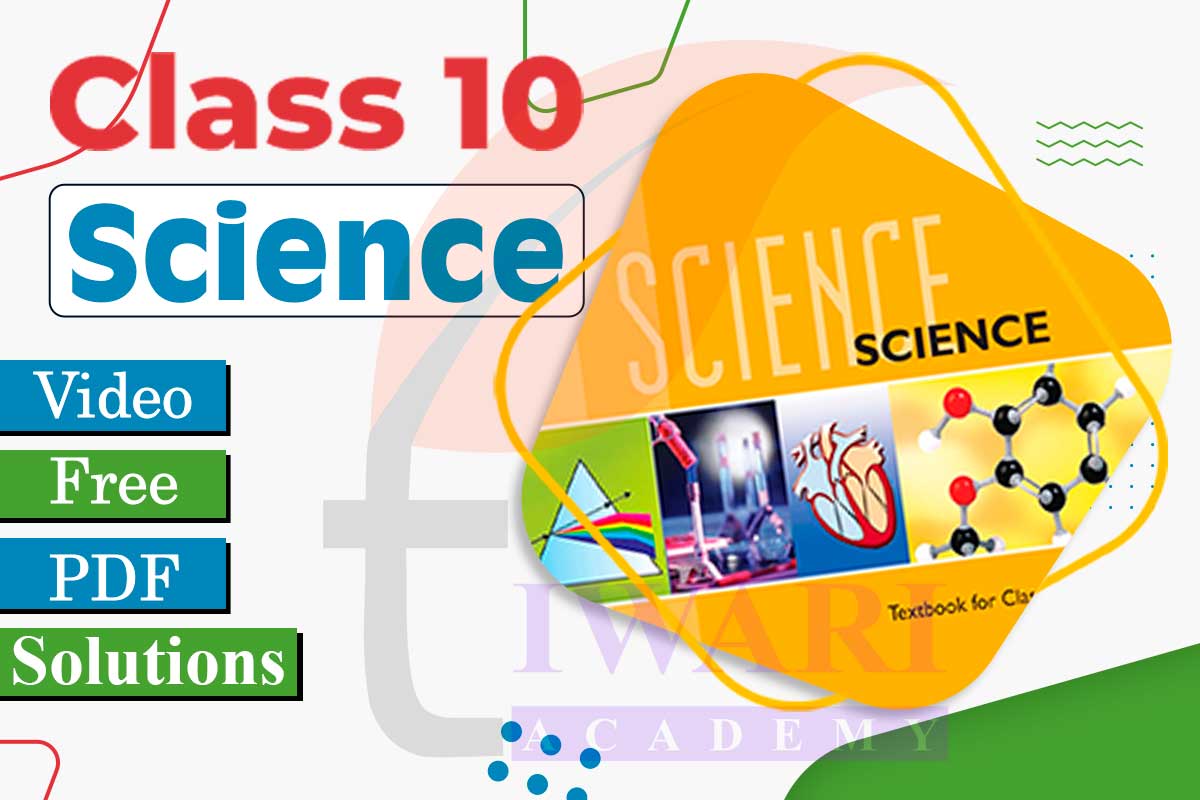
Tiwari Academy’s NCERT Free solutions for Class 10 Science provide clear, concise explanations of textbook concepts, helping students improve their understanding of key topics. This deep conceptual clarity is essential for exam success. Science bridges classroom learning with real-world issues, showing students how their knowledge can be applied to solve real-life problems. This practical approach not only strengthens their grasp of scientific concepts but also highlights the relevance of what they learn, motivating them to explore how science can address everyday challenges. This combination of understanding and application enhances both academic and practical skills.
Improve their performance in their exams. The Tiwari Academy Class 10 Science NCERT Textbook Solutions are designed to help students to answer the types of questions that are likely to be asked in their exams. Tiwari Academy is a great resource for students who want to excel in their Class 10 Science exams and to prepare for success in their future.
Here are some additional tips that may be helpful for students using Tiwari Academy’s NCERT Simplified solutions for Class 10 Science. Use the solutions in conjunction with your textbook and other resources. The solutions should not be used as a substitute for studying the textbook. Instead, they should be used to check your understanding of the concepts and to solve problems.
Don’t hesitate to ask for help. If you’re struggling with a concept or problem, reach out to your teacher or a friend for assistance. Make a habit of practicing regularly by solving problems from the textbook or Tiwari Academy NCERT Exercises solutions every day. Stay persistent — science can be tough, but it’s also rewarding. With consistent practice and determination, you will succeed over time.
10th Science Chapterwise Previous Years CBSE Board Questions
- 10th Science Chapter 1 Board Exam Questions
- 10th Science Chapter 2 Board Exam Questions
- 10th Science Chapter 3 Board Exam Questions
- 10th Science Chapter 4 Board Exam Questions
- 10th Science Chapter 5 Board Exam Questions
- 10th Science Chapter 6 Board Exam Questions
- 10th Science Chapter 7 Board Exam Questions
- 10th Science Chapter 8 Board Exam Questions
- 10th Science Chapter 9 Board Exam Questions
- 10th Science Chapter 10 Board Exam Questions
- 10th Science Chapter 11 Board Exam Questions
- 10th Science Chapter 12 Board Exam Questions
- 10th Science Chapter 13 Board Exam Questions
Tiwari Academy is recognised for offering educational resources and solutions across various subjects, including Class 10 Science. However, since real-time information may change, here are key factors to consider when assessing why it might be regarded as the best for Class 10 Science solutions:
Comprehensive Coverage: Solutions that align with the NCERT syllabus and cover all important topics.
Clarity: Clear and simple explanations that make complex concepts easy to understand.
Accessibility: Free or affordable resources, making them available to a wide range of students.
Accuracy: Solutions that are accurate and updated according to the latest curriculum.
Student-Friendly: Step-by-step guidance that helps students build strong problem-solving skills.
These aspects contribute to its popularity and effectiveness in helping students excel in Class 10 Science.
Tiwari Academy have offered a wide range of study materials, including textbook solutions, practice questions, and explanations, to help students cover the entire Class 10 Science Revised Solutions and syllabus. The platform may have provided high-quality and well-explained solutions to textbook questions and other practice problems, helping students understand concepts better.
Class 10 Science MCQ Tests for Session 2025-26
Class 10 Science Chapter 1 MCQRead moreChapter 1: Chemical Reactions and Equations
Class 10 Science Chapter 2 MCQRead moreChapter 2: Acids, Bases and Salts
Class 10 Science Chapter 3 MCQRead moreChapter 3: Metals and Non-Metals
Class 10 Science Chapter 4 MCQRead moreChapter 4: Carbon and its Compounds
Class 10 Science Chapter 5 MCQRead moreChapter 5: Life Processes
Class 10 Science Chapter 6 MCQRead moreChapter 6: Control and Coordination
Class 10 Science Chapter 7 MCQRead moreChapter 7: How do Organisms Reproduce
Class 10 Science Chapter 8 MCQRead moreChapter 8: Heredity and Evolution
Class 10 Science Chapter 9 MCQRead moreChapter 9: Light – Reflection and Refraction
Class 10 Science Chapter 10 MCQRead moreChapter 10: Human Eye and the Colourful World
Class 10 Science Chapter 11 MCQRead moreChapter 11: Electricity
Class 10 Science Chapter 12 MCQRead moreChapter 12: Magnetic Effects of Electric Current
Tiwari Academy has made its resources easily accessible, enabling students to study at their own pace and convenience. Offering free resources has made it a popular choice among students and parents. A user-friendly website or app with an easy-to-navigate interface enhances the learning experience. If you struggle with a specific topic, don’t hesitate to ask for help from your teacher, classmates or online forums. Tiwari Academy also have a community or support system where you can ask questions and clarify doubts, making it even more helpful for students.
Positive reviews and recommendations from students, teachers, or educational experts could contribute to its reputation as the best platform for Class 10 Science Solutions. Extra features like video tutorials, sample papers, and tips for exam preparation may have made Tiwari Academy stand out. As the exams approach, dedicate time to revision. Go through your notes and our solutions again. Focus on problem-solving, and make sure you’re confident in your understanding of all topics.
Feedback and Suggestions about 10th Science NCERT Solutions
To determine whether Tiwari Academy is still considered the best for Class 10 Science Solutions in 2025-26, check recent reviews, conducting online research and asking for recommendations from teachers, classmates or educational forums. Keep in mind that educational platforms can evolve and change, so it’s important to verify their current status and effectiveness. Regularly assess your progress by taking mock tests or quizzes. Tiwari Academy may have such resources available. Analyze your performance, identify weak areas and focus on improving them.
NCERT of all chapters (Physics, Chemistry and Biology) are given in the section of solution. Important derivations, numerical problems, practice test and assignments will also have uploaded time to time. Class 10 Science Solutions often incorporate diagrams, illustrations and images to visually explain concepts and enhance understanding. For problems and questions, solutions offer step-by-step explanations, guiding students through the process of solving and understanding. Through holiday homework page you can upload you summer holiday, if need help, we will provide the solutions and suggestions according to requirements. Offline Solutions Apps works without Internet.
How to Perform Better in Class 10 Science Exams?
If you are preparing to compete with the toppers of the class to achieve more than 90% in Science or if you want to pursue your study with the science stream, you must focus upon these three sections of science Physics, Chemistry and biology. People with the target 100% or A+ achieve, the score with sheer will perseverance and that is what you need to achieve first. Tiwari Academy’s online platform allows students to access study materials at any time and from anywhere with an internet connection. This flexibility can accommodate different learning schedules and preferences. Any student with the average IQ and dedication will be able to achieve 90% but people who want to surpass the 90% threshold and go beyond to achieve 100% in science need to keep in mind that there is not shortcut to the success.
- Step 1: Prepare the chapter from NCERT, figuring out the main terms.
- Step 2: Plan and Study according to Time Table.
- Step 3: Prepare the list of Formulae, Diagrams and Experiments.
- Step 4: Take help from Class 10 Science NCERT Assignments Solutions.
- Step 5: Keep distance from distractions during the study.
Step 1: Prepare the chapter from NCERT, figuring out the main terms.
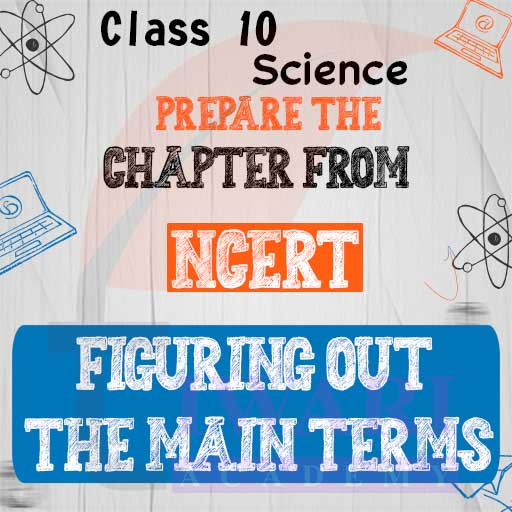
Step 2: Plan and Study according to Time Table.
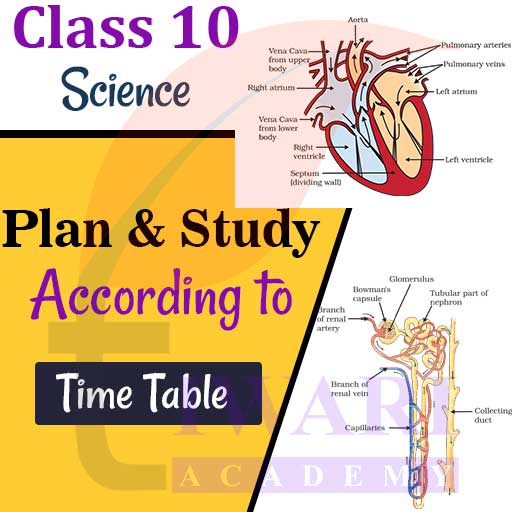
Step 3: Prepare the list of Formulae, Diagrams and Experiments.

Step 4: Take help from Class 10 Science NCERT Assignments Solutions.
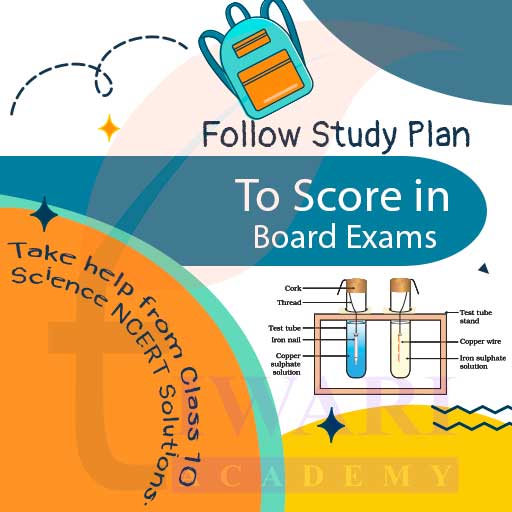
Step 5: Keep distance from distractions during the study.
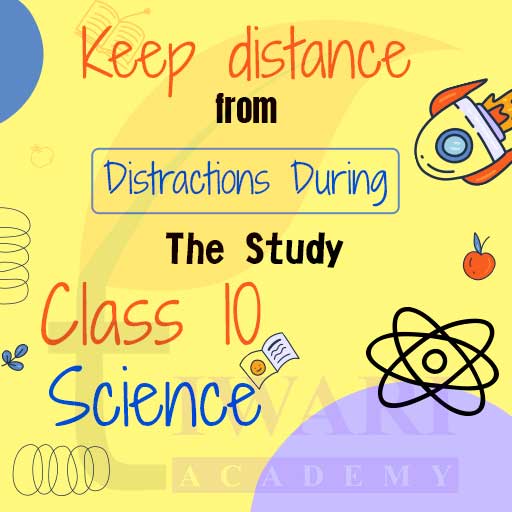
Incorporating scientific thinking and problem-solving skills into the curriculum benefits students across all subjects and equips them with valuable abilities that go beyond the science classroom. These skills are crucial for academic achievement, lifelong learning, and success in various careers and personal pursuits. By fostering critical thinking and the ability to tackle complex problems, students are better prepared for real-world challenges and opportunities in any field they choose. To get good marks in Class 10 Science using Tiwari Academy’s Class 10 Science NCERT Textbook Solutions or any similar educational resource, you can follow these steps:
Understand the Syllabus: First, ensure that you have a clear understanding of the Class 10 Science syllabus. Know what topics are covered and the weightage of each chapter in the exam.
Use the NCERT Textbook: Start by thoroughly reading your Class 10 Science NCERT textbook. Understand the concepts and ideas presented in each chapter. Tiwari Academy’s solutions often complement the NCERT textbook, so use them in conjunction.
Solve NCERT Questions: Tiwari Academy typically provides solutions to the questions presented in the NCERT textbook. After reading a chapter, attempt the questions on your own and then refer to Tiwari Academy’s solutions to check your answers and understanding.
Practice Additional Problems: Besides the NCERT questions, Tiwari Academy offer additional practice problems. Utilize these to further reinforce your understanding of the concepts and improve problem-solving skills.
Focus on Understanding: Don’t just memorize solutions. Focus on understanding the underlying concepts. This will help you answer questions even if they are presented differently in the exam.
Create a Study Schedule: Plan your study schedule in a way that you allocate sufficient time to each chapter according to its weightage in the exam. Make a realistic timetable that includes regular breaks. These notes will be helpful during revision. Tiwari Academy’s solutions can be a valuable source for summarizing important points.
Online Resources: If Tiwari Academy offers video lectures or animations related to Class 10 Science topics, consider using them for better visualization and understanding of complex concepts.
Practice Previous Year Papers: Work through previous years’ question papers and sample papers. Tiwari Academy may also provide these. This will help you become familiar with the exam pattern and the types of questions asked.
Many solutions provide real-life examples and applications of scientific principles, helping students connect concepts to their everyday experiences. These solutions also include practice questions and exercises that enable students to apply their knowledge and improve their problem-solving skills, making learning more practical and engaging.
What is the Class 10 Science Solutions Guide?
The Class 10 Science Solutions Guide is a comprehensive resource that helps students understand and solve the questions from their Science textbook. It includes Class 10 Science NCERT Textbook Solutions, chapter-wise solutions and step-by-step explanations to enhance conceptual clarity. These solutions are tailored to cover important chapters and topics, making it easier for students to prepare for exams. The guide also provides additional resources like Class 10 Science solved papers, practice questions and revision guides, ensuring students have a well-rounded preparation strategy. Available in multiple formats, it’s accessible both offline and online for convenience.
How to score 100 percent marks in exams of Class 10 Science?
Most of the questions asked in CBSE board exams are from NCERT only. Students are advised to read thoroughly each chapter of NCERT Textbook and try to make a quick note for revision. During the study of chapters, the activity related to topics must be done carefully. Now a days activity based questions are also asked in board exams. Once completed the NCERT book, student must revision the entire class 10 science through NCERT Exemplar book. It will enhance your confidence and help to identify the weak area science syllabus. Following this process, one can score easily 95% to 100% marks in 10th Science board exams.
How can I download Class 10 Science NCERT Solutions?
Students can easily download Class 10 Science NCERT PDF Solutions from educational websites or apps like Tiwari Academy Learning App that offer these resources. Many platforms provide solutions as free PDF downloads, making it accessible to all. Search for Class 10 Science solutions free download or Class 10 Science solutions PDF download to find reliable sources. These PDFs include step-by-step answers to textbook questions, ensuring comprehensive understanding. For offline use, save the downloaded files to your device, while online solutions provide flexibility for instant access. Always ensure the source aligns with the latest CBSE curriculum.
Which is the most difficult chapter in Class 10 Science final exams?
There are total 13 chapters in Class 10 Science NCERT Textbook. Most of the chapters are easy to understand and help to score well in exams. Out of these chapters, chapter 11 Electricity is considered as the most difficult chapter of the book which is in second term syllabus. There are two reasons for being difficult. First, the chapter is little bit lengthy having too many formulae and concepts of electricity and secondly there are many numerical in the chapter increase the level of difficulty. If a student spend a bit of time regularly on this chapter, the chapter automatically become easy to understand.
Are Class 10 Science Solutions Guides available in Hindi?
Yes, Class 10 Science Solutions Guides are available in Hindi for students who prefer studying in their native language. Resources like Class 10 Science solutions in Hindi Medium cover all chapters and topics in an easy-to-understand format, ensuring clarity of concepts. These guides include textbook solutions, chapter-wise notes and important questions, tailored to the CBSE Hindi medium curriculum. Students can download these guides in PDF format or access them online. By using solutions in Hindi, students can effectively bridge language barriers and perform well in exams without compromising their understanding.
Which is the best book for the preparation of Class 10 Science 1st and 2nd term exams?
If you check the question papers of CBSE board exams or CBSE Sample papers, the questions are directly or indirectly asked from NCERT Textbook only. To get a perfect preparation of 10th Science exams, NCERT Book provides the best study material for the students. If someone need more to practice as well as self-evaluation, please refer Exemplar book published by NCERT.
How do Class 10 Science sample papers help in exam preparation?
Class 10 Science sample papers are an invaluable resource for exam preparation as they replicate the pattern and difficulty level of actual board exams. Solving these papers helps students practice time management, identify weak areas and gain confidence in answering questions. Paired with resources like the Class 10 Science Solutions Guide, these papers offer a practical approach to revision. They often include solutions, enabling students to understand the correct way to frame answers. By regularly solving sample papers, students improve their problem-solving skills and are better prepared to handle diverse question types during exams.
How to download Class 10 Science NCERT book and solutions for CBSE Session 2025-26?
The updated format of 10th Science Solutions for academic session 2025-26 are given on Tiwari Academy website free to use. All the solutions of numerical and answers of questions are done by the expert teachers. Class 10th Science Solutions are made in such a way it can be understood by all categories of students. The answers of grade 10 NCERT Textbook intext questions are also given along with the exercises solutions.
What additional resources should I use alongside the Class 10 Science Solutions Guide?
To maximize exam preparation, students should complement the Class 10 Science Solutions Guide with resources like Class 10 Science CBSE sample papers, previous year papers and a question bank. These materials provide ample practice and familiarize students with the exam pattern. The Class 10 Science study material and revision guide summarize key concepts for quick review, while Class 10 Science practice questions build problem-solving speed and accuracy. Using notes PDFs ensures you focus on important topics. Combining these resources ensures a holistic approach, improving conceptual understanding and boosting confidence for the exams.


